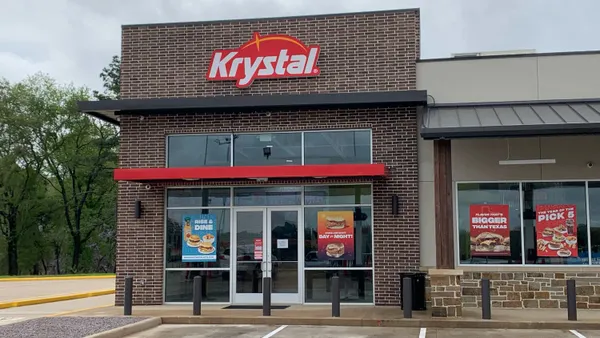Dive Brief:
- The median restaurant startup cost hovers around $375,000, with new construction hitting around $650,000 and the cost of retrofitting a space for foodservice reaching $425,000, according to a RestaurantOwner.com’s member survey. Renovations for an existing restaurant space land around $275,000.
- New restaurants hold a median of 120 seats with about one-third of restaurant space occupied by the kitchen. The surveyed owners reported median annual sales of $1.1 million, which amounts to $325 per square foot or a little more than $10,500 per seat.
- While a quarter of respondents reached profitability within two months, another 25% needed one year. Full-service and limited-service restaurants achieve median sales above $750,000, per the survey. Bars reach the highest annual median sales at $1.38 million, but across all types including catering, net profit rests at a median of 5.5%.
Dive Insight:
A few hundred thousand dollars might not seem like a massive investment, but even if the owner starts recouping initial costs within the year, it’s impossible to predict how long the good times will last. For example, it costs between $116,000 and $263,000 to open a Subway, but traffic has dropped 25% since 2012 due to competition, major marketing snafus and overexpansion — factors generally outside the individual owner’s control.
Sandwich chains tend to incur less upfront costs than other quick-service categories. Pizza joints start closer to $200,000; Papa John’s, for instance, tops out around $850,000 and Pizza Hut $2 million. That’s true of burger chains, too: it can take up to $3.5 million to open a Culver’s, $1.9 million for a Carl’s Jr., and $2.3 million for a McDonald’s or Jack-in-the-Box. On the other hand, The Melting Pot requires a $1 million investment, give or take, to open a full-service restaurant with a bar.
But as the RestaurantOwners.com survey found, a full-service restaurant doesn’t necessarily mean higher profits, nor does having a bar. Limited-service respondents reported a median of $12,000 in pre-opening and training costs, compared to $20,000 for a bar/tavern and $25,000 for full-service.
As trends and technology change, especially in the quick-service segment where speed and convenience matter greatly, restaurants must also deal with expensive remodels. Almost every major chain has upgraded in small ways — by adding self-order kiosks or video menu boards, for instance — or in significant ways — by completely changing the store’s look.
Franchisee contracts typically include a clause about regular updates as requested by the company, and a renewal agreement can hang in the balance. For this reason, operators bear the brunt of such upgrades, but recently franchisors have been chipping in to stay ahead of the competition. McDonald’s offered to cover just over half of renovation costs that can reach $700,000 last year. In 2012, Domino’s demanded its partners to pay for $50,000 remodels by 2017.
While independent restaurants and groups often pay for PR representation or perhaps ad-buys in local magazines, franchises cough up monthly fees to franchisors. Plus, they must heed their instructions to promote seasonal offerings and special deals. Franchisees have been unhappy lately because of these expensive tech upgrades and slow-growing sales in a very competitive marketplace. If startup costs were to increase as delivery and take-out sales grow, its possible more chains may opt for the “ghost restaurant” setup and skip the brick-and-mortar entirely.













